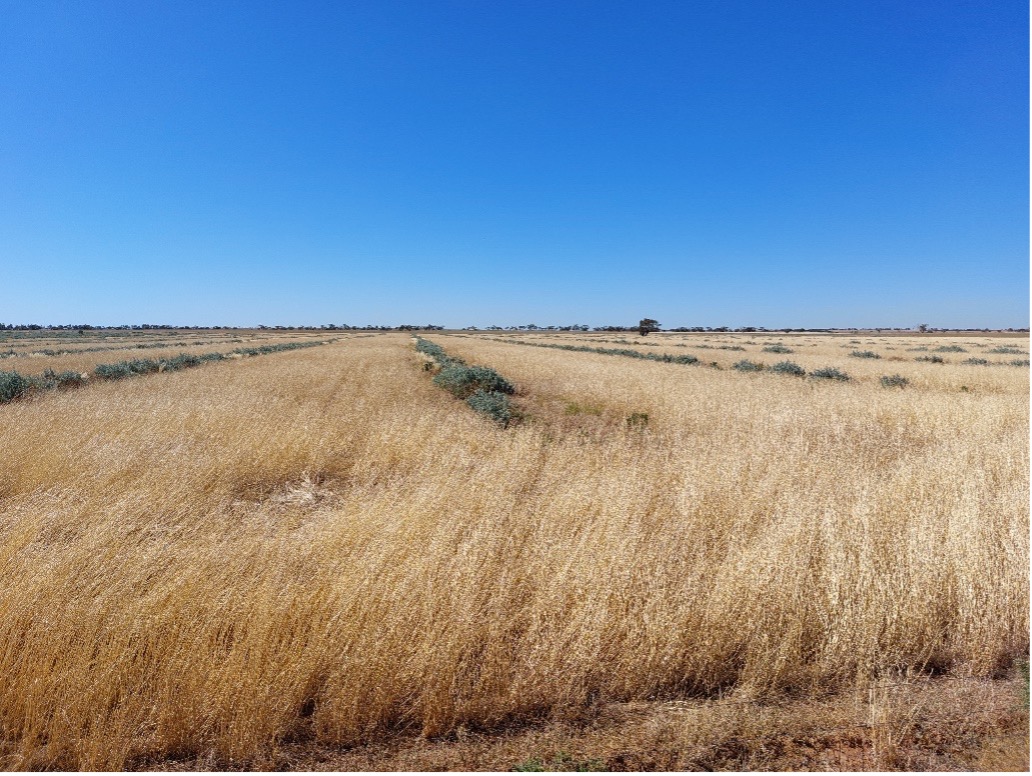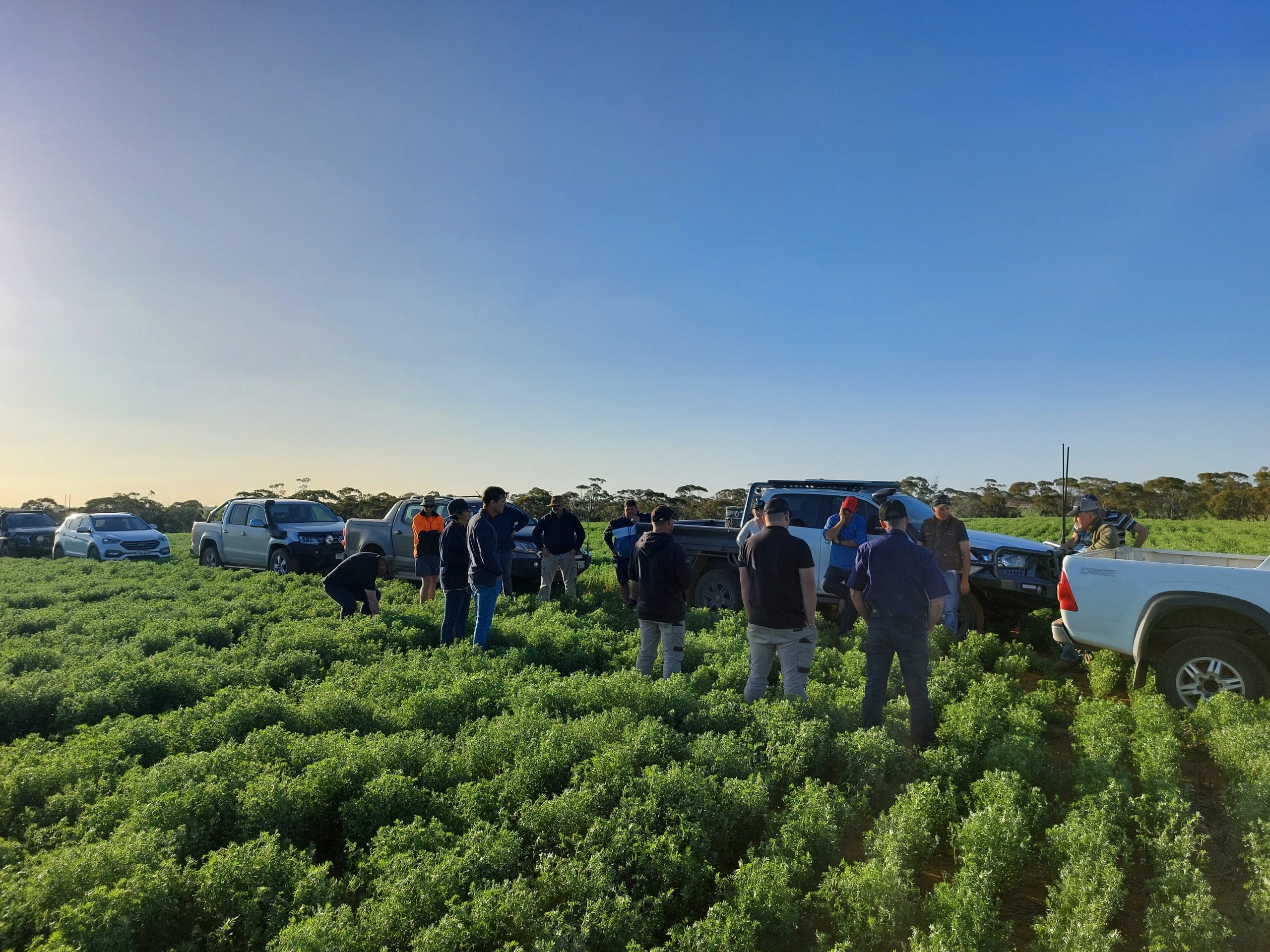Building drought resilience on Mallee Farms
Assisting Mallee farmers tackle wind erosion.
Key objectives
Implement cropping practices that boost crop yield while increasing ground cover to protect soil
Promote the use of forage shrubs and innovative livestock containment designs to expand and improve the livestock feedbase
Strengthen soil protection by maintaining ground cover on erosion-prone lands through sustainable farming practices.
About the project
This project was funded to help Mallee farmers tackle wind erosion with practical ways of improving and maintaining groundcover on erosion-prone soils.
There were two main themes in the project
1. Promoting cropping practices that improve crop performance and leave more ground cover.
During 2023, three on-farm demonstration sites were set up to demonstrate the impact of variable rate technology and early sowing on crop performance and ground cover.
For an overview of two of the demonstration sites and agronomic insights to date, see ‘Vari-rate demonstrations, disease and keeping cover at Carwarp’ and ‘A talk from and MSF crop walk – sowing time demonstrations in the Millewa’ in Podcast episodes below.
An overview of findings from the demonstration sites was also given in three case studies:
– Early sowing pays dividends in the northern Mallee
– Using EM38 mapping to guide variable rate fertiliser strategies at Meringur in NW Victoria
– Setting up for variable rate technology (VRT) – mapping soil variability in the Millewa.
2. Promoting forage shrubs and livestock containment designs to broaden the livestock feedbase and protect groundcover on vulnerable soils.
During 2022, forage shrub demonstration sites were established at three sites across the Victorian Mallee, in the Millewa, at Patchewollock and at Murrayville.
Workshops were run to promote forage shrub plantings and different confinement feeding set-ups.
Fact sheets were developed addressing the feed value and costs/benefit of forage shrub plantings:
– Key findings from the diverse shrubs and pasture demonstration sites in the Vic Mallee, 2023-2024
– Establishing a diverse forage shrub/pasture mix at Wargan in the Victorian Mallee
– Monitoring the long-term performance of a diverse forage shrub/pasture mix at Murrayville
– Establishing a diverse forage shrub/pasture mix at Patchewollock in the Vic Mallee.
A forage shrubs decision tree was developed to guide livestock producers towards shrub designs that best suit their circumstances.

The Aim of Building drought resilience on Mallee Farms
Enhance Crop Performance
Implement cropping practices that boost crop yield while increasing ground cover to protect soil.
Diversify Livestock Feedbase
Promote the use of forage shrubs and innovative livestock containment designs to expand and improve the livestock feedbase.
Protect Vulnerable Soils
Strengthen soil protection by maintaining ground cover on erosion-prone lands through sustainable farming practices.
Fodder shrubs decision tree
Podcast Episodes
Videos
Resources
Cropping
Forage Shrubs
Acknowledgments

This project is supported by the Mallee Catchment Management Authority, through funding from the Australia Government’s Future Drought Fund.
Working together with farmers
Other MSF Projects
To identify break crop options suitable for grazing with good early biomass production and ground cover.
Helping Farmers in the Mallee understand how to manage their Greenhouse Gas Emissions.
Our project, '101 Questions About SA Cropping Soils,' will boost farmer knowledge through easy-to-access e-publication and targeted social media Q&As.
This project funds Mallee farmers to combat wind erosion by enhancing groundcover on vulnerable soils.
Development and extension to close the economic yield gap and maximise farming systems benefits from grain legume production in South Australia.
A holistic approach to seep management for preventing land degradation in the landscape.
Strengthening Mallee Farmers and Communities for Sustainable Futures and Enhanced Resilience.
Empowering Mallee's youth to share and celebrate their stories of resilience and community through captivating social media reels
Enhancing sustainable agriculture through innovative carbon farming practices across South Australia’s Murray Mallee
We can see that harvest is on the horizon but we are not quite there yet. So what could possibly go wrong?
Supporting farmers across the Mallee to make better decisions GRDC National Risk Management Initiative (RiskWi$e)
Demonstrate how farmers can manage their own investigation of nutrition requirements when setting up VRT soil zones and fertiliser recommendations
Enhancing drought resilience and groundcover management in low-rainfall farming.
Improving Sandy Soil Management for Farmers
This project will demonstrate farmer ready management practices that break the cycle of saline land degradation exacerbated by very dry or drought conditions
MSF with the support of Australian Wool Innovation (AWI) is on a mission to close the knowledge gap around feed and nutrition in low rainfall zones.
Maximising soil amelioration efficiency and profitability in South Australian Mallee
A holistic approach to seep management for preventing land degradation in the landscape.
Demonstrating and validating the implementation of integrated weed management strategies to control barley grass in low rainfall farming systems.
Improving the production of legume crops on sandy soils to improve ground cover and reduce erosion risk
Exploring nitrogen strategies to boost crop yields in NSW Mallee region
Area wide management for cropping systems weeds, investigating the weed management, social and economic opportunity.
This project has delivered a state-of-the-art network of 30 weather stations, to the Riverland and Mallee, designed to observe localised meteorological phenomena.
This MSF led project has delivered a high work rate plough prototype in collaboration with UniSA Research Engineers and John Shearer.
Deep ripping to enhance production on Mallee Sandy Soils


































